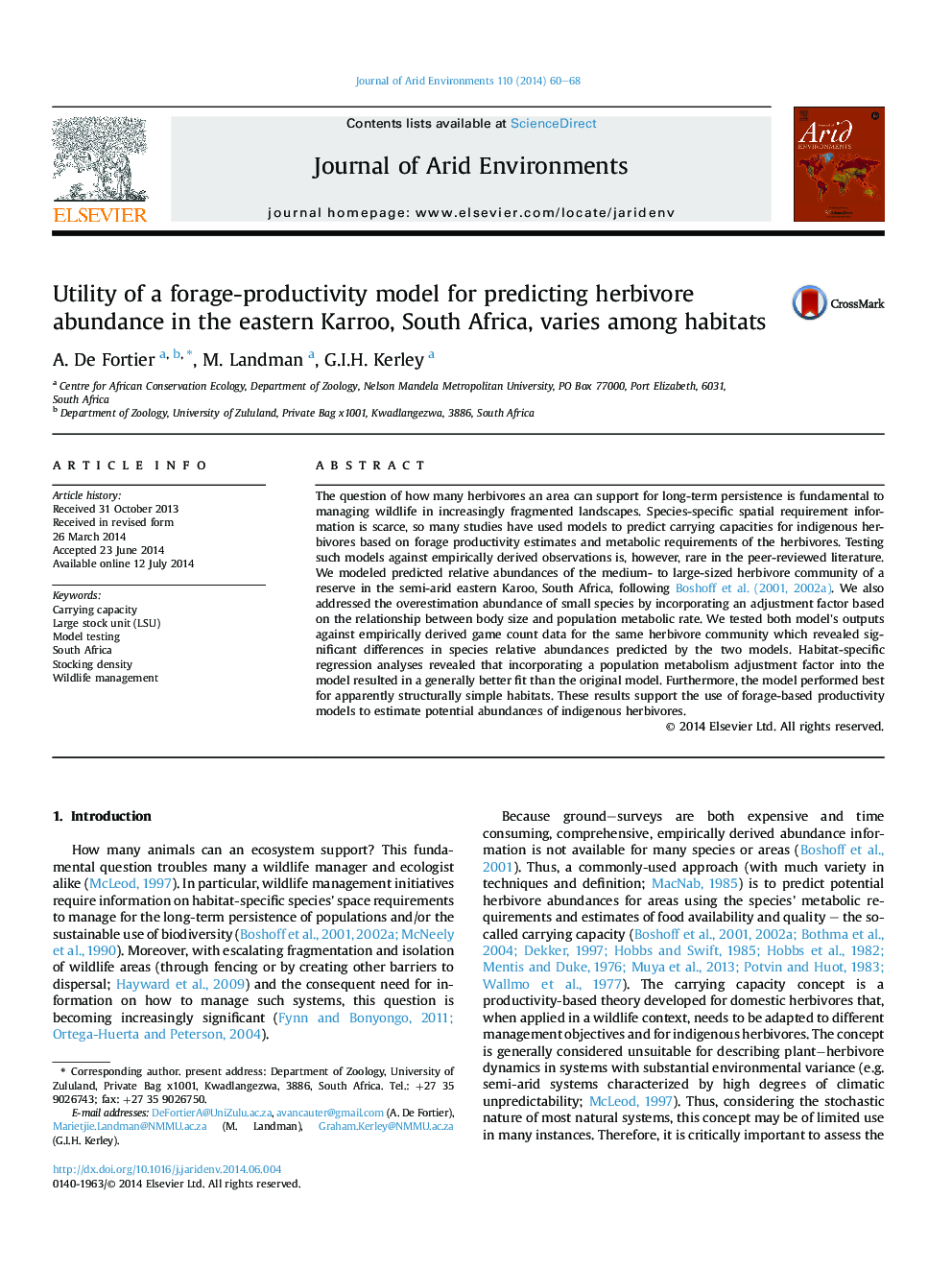| کد مقاله | کد نشریه | سال انتشار | مقاله انگلیسی | نسخه تمام متن |
|---|---|---|---|---|
| 4392897 | 1618248 | 2014 | 9 صفحه PDF | دانلود رایگان |
عنوان انگلیسی مقاله ISI
Utility of a forage-productivity model for predicting herbivore abundance in the eastern Karroo, South Africa, varies among habitats
ترجمه فارسی عنوان
سودمندی یک مدل بهره وری علوفه برای پیش بینی فراوانی گیاهخواران در شرق کررو، آفریقای جنوبی، در میان زیستگاهها متفاوت است
دانلود مقاله + سفارش ترجمه
دانلود مقاله ISI انگلیسی
رایگان برای ایرانیان
کلمات کلیدی
موضوعات مرتبط
مهندسی و علوم پایه
علوم زمین و سیارات
فرآیندهای سطح زمین
چکیده انگلیسی
The question of how many herbivores an area can support for long-term persistence is fundamental to managing wildlife in increasingly fragmented landscapes. Species-specific spatial requirement information is scarce, so many studies have used models to predict carrying capacities for indigenous herbivores based on forage productivity estimates and metabolic requirements of the herbivores. Testing such models against empirically derived observations is, however, rare in the peer-reviewed literature. We modeled predicted relative abundances of the medium- to large-sized herbivore community of a reserve in the semi-arid eastern Karoo, South Africa, following Boshoff et al. (2001, 2002a). We also addressed the overestimation abundance of small species by incorporating an adjustment factor based on the relationship between body size and population metabolic rate. We tested both model's outputs against empirically derived game count data for the same herbivore community which revealed significant differences in species relative abundances predicted by the two models. Habitat-specific regression analyses revealed that incorporating a population metabolism adjustment factor into the model resulted in a generally better fit than the original model. Furthermore, the model performed best for apparently structurally simple habitats. These results support the use of forage-based productivity models to estimate potential abundances of indigenous herbivores.
ناشر
Database: Elsevier - ScienceDirect (ساینس دایرکت)
Journal: Journal of Arid Environments - Volume 110, November 2014, Pages 60-68
Journal: Journal of Arid Environments - Volume 110, November 2014, Pages 60-68
نویسندگان
A. De Fortier, M. Landman, G.I.H. Kerley,
